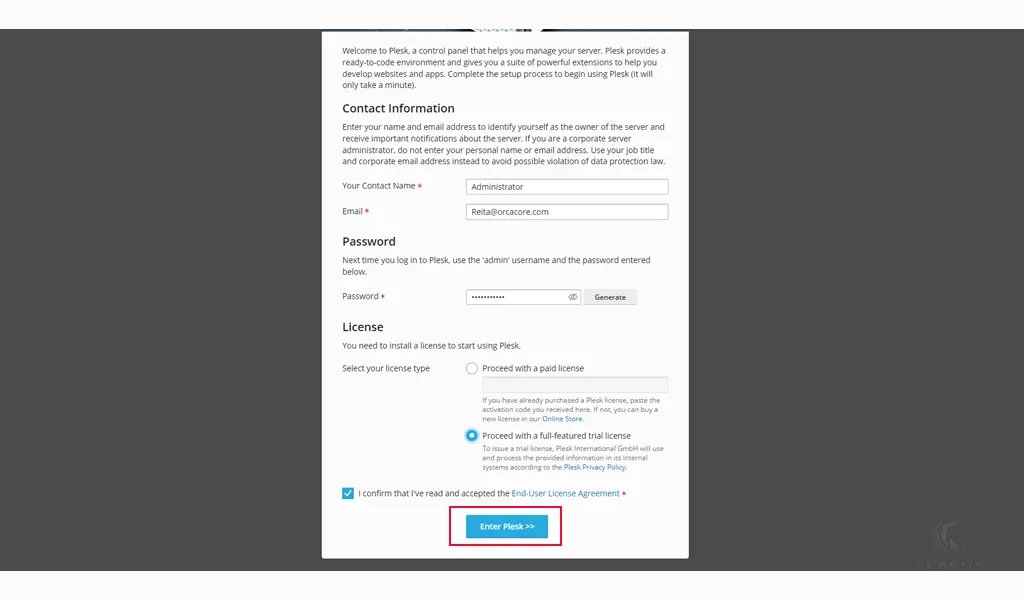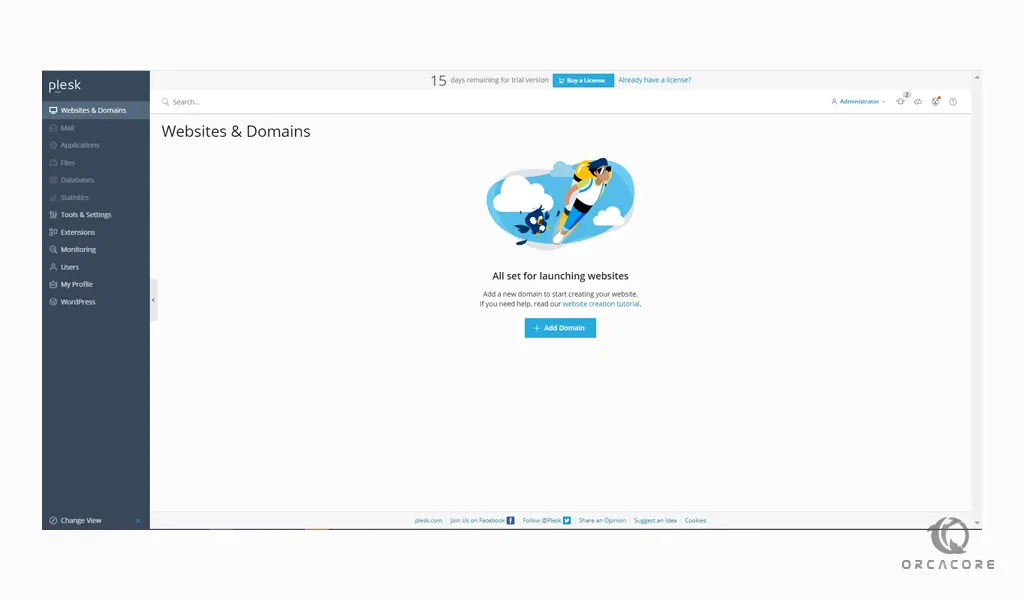Share your love
How To Set up Plesk on Centos 7

In this guide, we intend to teach you How To Set up Plesk on Centos 7.
Plesk is a web-based platform for hosting companies. A Plesk license allows web hosting companies to easily manage hundreds and even thousands of virtual hosts on a single server, providing their customers with easy and simple access to any products they prefer using.
Plesk is scalable, secure, and can be expanded with many different plugins which are available in bundles or as single modules. Plesk does not require any coding skills from the user and offers top security for business owners and end-users.
How To Set up Plesk on Centos 7
To install Plesk on Centos 7, you need to log in to your server as a non-root user with sudo privileges. To do this, you can follow our article the Initial Server Setup with Centos 7.
Also, you need to set up a basic firewall. To do this, you can check our guide How To Set up a Firewall with firewalld on Centos 7.
Now follow the steps below to complete this guide.
Install Plesk on Centos 7
You can install Plesk in different ways. In this guide, you will install Plesk on your Centos 7 by using the installer console.
First, update your local package index with the following command:
sudo yum -y update
Next, install the wget tool with the command below:
sudo yum install wget
Then, you can use the wget command to download the Plesk installer on Centos 7:
sudo wget https://autoinstall.plesk.com/plesk-installer
When your download is completed, you need to make your file executable with the following command:
sudo chmod +x plesk-installer
Now run the script with the command below to install the Plesk:
sudo ./plesk-installer
You will be asked some questions. First, you need to agree with the terms of services by pressing F. Second, to send information about upgrading and installation issues, enter Y or N by your will.
In the next step, you need to choose the type of Plesk installation on Centos 7. Enter F for the recommended installation.
Then, Enter F for upgrading software packages.
This will take some time to complete.
When your installation is completed, in your output you will see:
Output Installation is finished Congratulations! The installation has been finished. Plesk is now running on your server. To complete the configuration process, browse either of URLs: * https://agitated-raman.server-ip.plesk.page/login?secret=4Jy9PvZwzaKKxVP4mmFtfYfZ7rxaDm71_z7Pj4R5-VTAYqeD * https://server-ip/login?secret=4Jy9PvZwzaKKxVP4mmFtfYfZ7rxaDm71_z7Pj4R5-VTAYqeD Use the username 'admin' to log in. To log in as 'admin', use the 'plesk login' command. You can also log in as 'root' using your 'root' password. Use the 'plesk' command to manage the server. Run 'plesk help' for more info. Use the following commands to start and stop the Plesk web interface: 'service psa start' and 'service psa stop' respectively. If you would like to migrate your subscriptions from other hosting panel or older Plesk version to this server, please check out our assistance options: https://www.plesk.com/professional-services/ The changes were applied successfully.
Note: Remember that the URL link provided above on Centos 7 will be used to access the Plesk web interface for the first time.
Configure Plesk on Centos 7
At this point, you need to check the PSA systemd service file and edit it to avoid PSA problems on startup.
Open the file with your favorite text editor, here we use vi:
sudo vi /etc/systemd/system/multi-user.target.wants/psa.service
Under the service section, change the type directive to the simple:
...
[Service]
Type=simple
RemainAfterExit=yes
ExecStart=/bin/trueWhen you are done, save and close the file.
Reload the system daemon with the command below:
sudo systemctl daemon-reload
Start your Plesk service on Centos 7 with the command below:
sudo systemctl start psa.service
Check that your service is active and running on your server with the command below:
sudo systemctl status psa.service
In your output you will see:
Output ● psa.service - Plesk Panel Loaded: loaded (/usr/lib/systemd/system/psa.service; enabled; vendor preset: disabled) Active: active (exited) since Wed 2022-05-18 03:44:05 EDT; 5min ago Main PID: 16649 (code=exited, status=0/SUCCESS) CGroup: /system.slice/psa.service
We assumed that you have enabled firewalld from the requirements. Now you need to allow HTTP and HTTPs traffic through the firewall with the command below:
# sudo firewall-cmd --permanent --add-service=http # sudo firewall-cmd --permanent --add-service=https
Reload the firewall to apply the new rules:
sudo firewall-cmd --reload
Access Plesk Web Interface
At this point, you can use the URL provided during your installation on Centos 7 to access the Plesk web interface.
You will see the Plesk login screen. Provide your administrator email, password, and License key and click on the Enter Plesk button. Here we choose the trial license.

You should see the Plesk dashboard on the following screen:

That’s it. From here you can add your domains and enjoy using your Plesk.
Conclusion
At this point, you learn to set up Plesk on Centos 7.
Hope you enjoy it.
May you be interested in this article on the orcacore website about Introduce the Best Web Hosting Control Panels.



